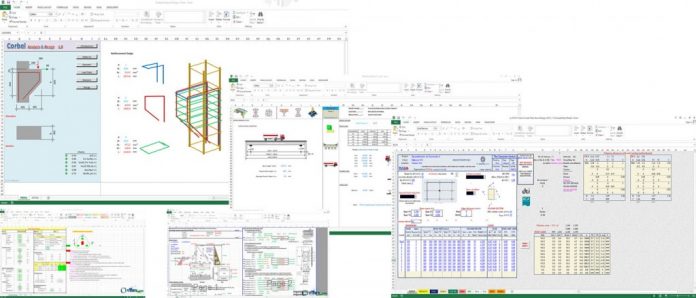
The Best Collection Of Civil Engineering Spreadsheets
26 May 2024
Table of Contents
The Best Collection Of Civil Engineering Spreadsheets
Civil engineering spreadsheets are powerful tools that can greatly enhance the efficiency, accuracy, and productivity of engineers. Here are several ways in which these spreadsheets can be useful:
1. Design and Analysis
- Structural Calculations: Spreadsheets can be used to perform complex structural calculations such as load analysis, bending moments, shear force, and deflection. Pre-built templates and formulas can simplify these processes.
- Geotechnical Analysis: They help in analyzing soil properties, bearing capacity, and slope stability, allowing for accurate foundation design.
- Hydraulic and Hydrology: Spreadsheets can model water flow in rivers, design stormwater management systems, and calculate flood risks.
2. Project Management
- Scheduling: Tools like Gantt charts can be created to manage project timelines, track progress, and allocate resources efficiently.
- Cost Estimation: Spreadsheets can provide detailed cost breakdowns, material take-offs, and budget tracking to ensure projects stay within financial limits.
- Resource Allocation: They help in managing labor, equipment, and material schedules, ensuring optimal use of resources.
3. Data Analysis and Visualization
- Data Management: Spreadsheets allow for the storage, organization, and analysis of large datasets. Engineers can use them to process data from surveys, site investigations, and sensor readings.
- Graphical Representation: Data can be easily visualized using charts, graphs, and tables, aiding in the interpretation and presentation of results.
4. Documentation and Reporting
- Report Generation: Standardized templates can be used to generate consistent and professional reports for clients, stakeholders, and regulatory bodies.
- Compliance and QA/QC: Spreadsheets can help track compliance with standards and regulations, and manage quality assurance/quality control processes.
5. Optimization and Simulation
- Design Optimization: Engineers can run multiple scenarios and optimize designs for cost, performance, and sustainability using iterative calculations.
- Simulation Models: Spreadsheets can simulate real-world behaviors such as traffic flow, material strength under various conditions, and environmental impact assessments.
6. Standardization and Reusability
- Templates and Libraries: Pre-designed templates and libraries of formulas and macros can standardize calculations and procedures, ensuring consistency across projects.
- Custom Tools: Engineers can create custom tools and scripts within spreadsheets to automate repetitive tasks and complex calculations, saving time and reducing errors.
Examples of Specific Applications
- Structural Engineering:
- Load calculations, beam design, column design, footing design, and retaining wall design.
- Transportation Engineering:
- Pavement design, traffic flow analysis, intersection design, and route optimization.
- Water Resources Engineering:
- Pipe network design, open channel flow calculations, stormwater drainage design, and water balance calculations.
- Environmental Engineering:
- Contaminant transport modeling, environmental impact assessment, air quality analysis, and waste management planning.
Benefits of Using Spreadsheets
- Accuracy: Reduces the risk of human error in complex calculations.
- Efficiency: Automates repetitive tasks and speeds up the design process.
- Flexibility: Easily adaptable to different types of projects and design requirements.
- Accessibility: Spreadsheets are widely used and accessible, with many engineers already familiar with their operation.
- Collaboration: Facilitates collaboration among team members through shared files and collaborative platforms.
Civil engineering spreadsheets are invaluable for streamlining workflows, enhancing precision, and facilitating better decision-making in various aspects of engineering projects. By leveraging the capabilities of spreadsheets, engineers can improve productivity and achieve more reliable outcomes in their work.


